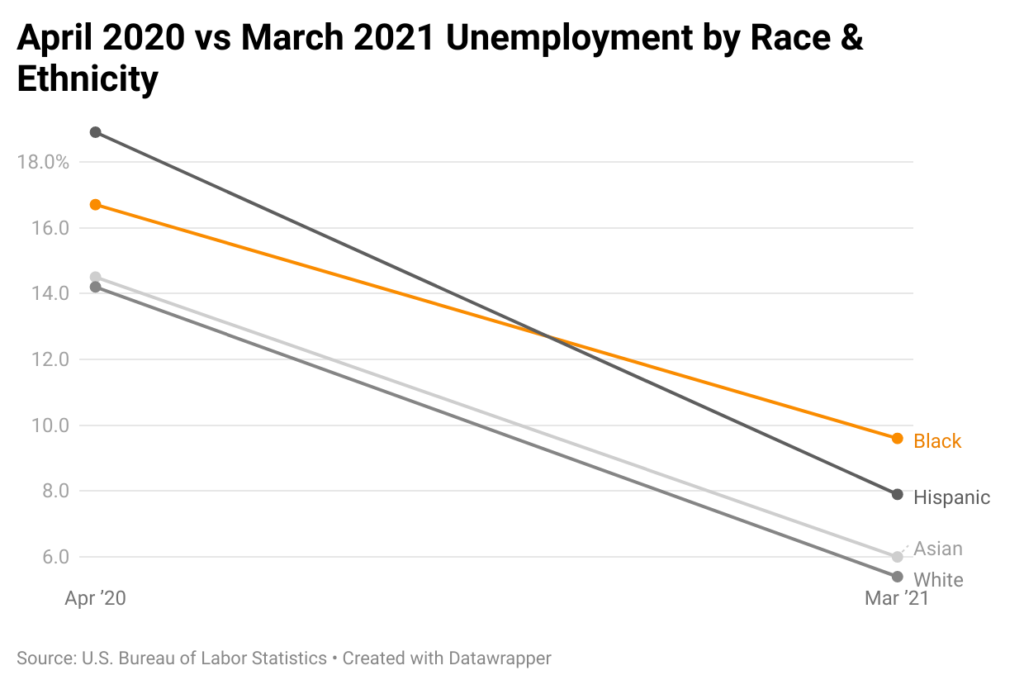Workforce Policy

March Jobs Data Shows Some Promise for Black Economic Recovery
By Aleya Jones and Jessica Fulton
In March, the unemployment rate for Black workers decreased slightly, but a deeper look into the U.S Bureau of Labor Statistics’ March 2021 Employment Situation Report signals the need for sustained investments in Black communities to ensure that Black workers are not left behind as the economy continues to recover.
A deep dive into the monthly data paints a troubling picture for the 1.95 million Black people who are looking for work but unable to find employment. Overall, the unemployment rate for Black workers in March 2021 was 9.6 percent, down 0.3 percent from February 2021, but up 0.4 percent from January 2021. Black men (ages 20 and up) faced a higher unemployment rate (9.8 percent) than other reported[1] adult demographic groups, followed by Black women (ages 20 and up) at 8.7 percent. Black youth (ages 16-19) also saw higher unemployment rates than young people of any other reported race/ethnicity at 18.1 percent.
March job gains in industries where Black workers are overrepresented provide some promise for an inclusive recovery. For example, Black people made up 12.1 percent of all workers in 2020, but 12.7 percent of leisure and hospitality which gained 280,000 thousand jobs, 14.8 percent of education and health services which added 101,000 jobs, 20.7 percent of transportation and warehousing which gained 48,000 jobs, and 12.4 percent of retail trade which added 23,000 jobs.
The long term data, however, points to a bleaker trend. The Black unemployment rate, unlike the unemployment rates for workers of other races, has not yet fallen to half of its pandemic peak. According to the U.S. Bureau of Labor Statistics, in the first quarter of 2021 the typical unemployed Black worker had been looking for work for 20.6 weeks, as opposed to 9.8 weeks in the first quarter of 2020. Additionally, 43 percent of unemployed Black workers had been looking for work for at least 27 weeks, illustrating that many unemployed Black workers are experiencing long term unemployment, which is correlated with negative effects on incomes and labor force attachment.
As lawmakers look to the next steps of building back better, they must continue to target investments toward communities who have been hardest hit by the impacts of the COVID-19 pandemic. In addition to challenges around unemployment, Black households have faced challenges keeping up on rent payments, affording household expenses, and getting enough food throughout the pandemic. An inclusive recovery would address the disparate impact Black families are facing, and help them to thrive in the recovering economy.
[1] The Bureau of Labor Statistics does not report monthly Employment Situation Report data by gender for or age for Asian workers or data for indigenous workers, though both populations are facing challenges in the COVID-19 recovery.

